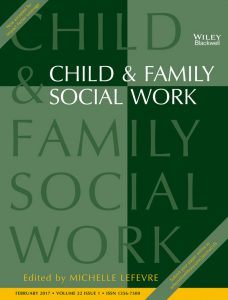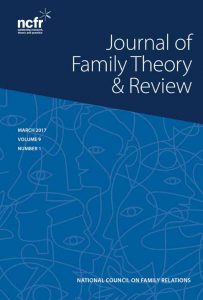Upholding Equity Across Different Campuses
by Jessica Poling, Rutgers University · Published · Updated

In the past decade the United States has witnessed an influx of conversations regarding sexual assault on college campuses. Cases like Brock Turner and Chanel Miller or Emma Sulkowicz became national examples of the prevalence of sexual assault on college campuses as well as universities’ failures to protect survivors and seek justice. While there is much work left to be done, there seems to be a more concrete understanding of the frequency of sexual assault and the injustice done to its victims. In response to this growing awareness, the Office of Civil Rights under the Obama administration released a letter known as the “Dear Colleague” letter to colleges and universities, reinforcing and redefining their obligations under Title IX. The letter, which responded to the alarming rates of campus sexual assaults and the failure of schools to uphold their obligations in the aftermath of an assault, clarified that schools are required to take action to eliminate known harassment and its consequences. In essence, the OCR redefined assault as a violation of women’s civil rights and condemned the many colleges who have blatantly overlooked the prevalence of assault on their campuses.
While these changes to Title IX (and the subsequent backlash under the Trump administration) have been widely discussed, it is less well known how colleges symbolically and practically handled this change. Gillian Gualtieri investigates this question in her newly published article, “Symbolic Compliance and Student Concerns: Legal Endogeneity and Title IX at American Colleges and Universities”[1]. Gualtieri begins her paper by questioning how colleges and universities chose to represent their legal obligations to Title IX policies in the wake of the “Dear Colleague” letter. Moreover, she asks how schools represented their obligations to both their students and the law, as well as what differences there might be in how schools chose to represent sexual harassment policies. Using content analysis of formal university documents and interviews with campus administrators at both big universities and baccalaureate colleges, Gualtieri makes several important conclusions. Contrary to employment literature, which concludes that large businesses are more likely to explicitly reference the law in their policies due to their public visibility, Gualtieri finds that baccalaureate colleges are more likely to reference Title IX policies in their handbooks and campus documents. In part, this may be because baccalaureate colleges have smaller networks; students are consequently more visible to the administrators who care for them and administrators are more visible to the students, who can hold them accountable. Administrators at small colleges may thus feel more of an obligation to explicitly reference the laws to show that they take campus sexual harassment seriously. Moreover, due to their size, big universities must operate more like bureaucracies and consequently may not feel that they need to be transparent in their care of students. However, this does not mean that big universities do not care for their students; rather, because administrators interact with students less frequently they may feel less of an obligation to symbolically represent their adherence to sexual harassment policies.
Gualtieri’s conclusion demonstrates that while the OCR redefinitions of Title IX policies changed the discourse around campus sexual harassment, colleges responded differently in their application. While baccalaureate colleges explicitly incorporated these changes into their policies as a form of symbolic compliance, large universities reference them less often-in part because they are primarily concerned with being accountable to fellow administrators rather than signaling their compliance to their many students. This conclusion counters existing literature on employment which has asserted a positive correlation between symbolic compliance and organizational size.
Moving forward, we might think about what other areas Gualtieri’s conclusions are applicable in, such as race equity or disability policies. In addition to their issues overlooking incidents of sexual harassment on campus, colleges and universities have also repeatedly been called out for failing to address racist incidents and inequities. As a historically upper-class, white institution, colleges are still contending with how to create a diverse, inclusive campus that represents the rapidly changing demographic landscape of our country. Yet, as Laura Pappano writes for The Hechinger Report, admissions teams have struggled with how to define what “diversity” really means as well as how to choose a representative class that includes often hard to pin down demographic qualities[2]. This struggle has real consequences for college students of color who must navigate institutions not prepared to challenge its historical whiteness or properly support students of color-often to the detriment of students’ success or health[3]. More recently, schools’ discriminatory practices and failure to address campus racism has sparked student protests. For example, in 2015 the students at the University of Missouri protested in response to unchecked racial bigotry, ultimately forcing the president and chancellor to resign.
Yet, universities are not completely alone in figuring out how to address these serious issues. In addition to enforcing sexual harassment policy, the OCR also helps schools comply to racial civil rights laws. Additionally, affirmative action policies encourage schools to diversify their student body (albeit sometimes in less formalized ways). Drawing inspiration from Gualtieri’s work, how do schools symbolically represent these policies, and what do these differences tell us about campus discrepancies?
We might similarly speculate that large universities are less likely to symbolically represent civil rights policies pertaining to race because of their larger networks and separation between their administrators and student body. Therefore, while these schools might be strongly committed to promoting racial equity, they nonetheless might feel less motivated to publicly demonstrate this commitment. Alternatively, perhaps the diversity of a student body predicts symbolic representation of racial equity. Large universities and baccalaureate colleges (particularly private ones) often have different student bodies in regard to racial composition. For example, Data USA reported that in 2017 the student population of baccalaureates was 54% white compared to 14% black or African-American, 12.6% Hispanic or Latino, and less than 5% Asian, American Indian, or Native Hawaiian[4]. Alternatively, large universities often have more diverse student bodies, partially due to their accessibility and name-recognition. Rutgers University’s 2017-2018 study body, for example, was 39% white, 23% Asian, 12% Hispanic, and 7.8% black or African-American[5]. While white students still occupy the largest group, these numbers reflect a more diverse student body that reflects a diversity of demographics. We might speculate that this difference also impacts how (and if) schools symbolically represent the laws and policies that support their students of color. Perhaps more diverse schools feel more pressure to signal their compliance to race equity policies. Given the pressing issues facing our students of color, future research should investigate this important question and how symbolic demonstrations of racial equity impact life on these campuses.
In conclusion, this discussion illuminates that while higher education institutions must comply to the same laws and policies, they might represent and think about them differently depending on their organizational characteristics. Given increasing contestation over the treatment of vulnerable populations on campuses, future conversations should also take into consideration the structural differences between institutions grappling with the same issues.
[2] Pappano, Laura. 2019. “America’s colleges struggle to envision the future of diversity on campus”, The Hechinger Report. June 16, 2019 (https://hechingerreport.org/whither-diversity/).
[3] Green, Adrienne. 2016. “The Cost of Balancing Academia and Racism”, The Atlantic. January 21, 2016 (https://www.theatlantic.com/education/archive/2016/01/balancing-academia-racism/424887/).
[4] 2017. “Baccalaureate Colleges”, Data USA. (https://datausa.io/profile/university/baccalaureate-colleges)
[5] 2017. “Rutgers Student Population”, IVSTATS. (https://www.univstats.com/colleges/rutgers-university-new-brunswick/student-population)





